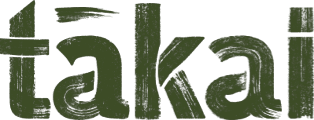
Making my home safe
Learning how to make your home into a safe space for pēpi.
Learning goals
- Provide a physically safe environment at home and in the community.
- Think about first aid and how to respond in emergencies.
Background information
As baby develops new skills, the ‘baby-safe zone’ has to be adjusted accordingly.
- But our homes also need to meet the needs of everyone who lives there. We have places in our homes where we do cooking, laundry, relax, sleep, study, wash or go to the toilet.
Whānau may have a lot of space or very little; they may have a lot of people living there or only a few. There may be people of different ages living there, and we might live with whānau members, friends, flatmates or boarders.
- Not everyone is going to be as focused on keeping your baby safe as much as you are, and they might not be as aware of how your baby is developing and growing.
- They might not be thinking about how having a mobile baby in the home means that things have to change. For example, they may need to change where they can safely leave their belongings or their hot drink, and whether they leave doors open or closed.
There is so much to think about. Even though you won’t have to do everything straight away, you will need to do more as your baby gets mobile and starts to access more places in the home.
Discuss safety at home
When you think about your home:
- What immediately springs to mind that you will need to change?
- How accessible is the kitchen, the glassware and crockery, knives and cleaning detergents?
- How hot is the water?
- Where are the accessible power cords and plugs?
- Where do people smoke?
- What happens when strangers are visiting?
- What about when people are drinking alcohol – how do you keep your baby safe?
Explore possible problems
Invite the participants to get down to floor level and look around the space. Ask them what they can see that might be a problem.
Now let’s look a bit higher – to where our baby can reach when they can kneel, stand and climb. Ask the participants:
- What is baby doing now, especially with their motor development?
- What has changed recently with baby?
- What new dangers can you see as the ‘baby-safe zone’ goes higher?
Read and discuss safety resources
There are many articles on Tākai related to safety for different age groups. A ‘Find’ will show you how many and which stage of development they specifically relate to. There is a selection in the Related articles below.
The Well Child Tamariki Ora My Health Book includes a safety section. Spend some time looking through it. At the preceding workshop you could ask the group to bring their own copies with them.
With the group, look at the Safety Around the Home page of the Plunket Whānau Āwhina website.
- Ask everyone to think about their own homes, and together work your way through each topic on the page.
- You could look at the Injuries and Emergency page too.
My Health Book also has a helpful section called ‘Emergencies – urgent action needed’ covering CPR, choking, burns and poisoning first aid and prevention information. You may like to look through this with the group also.
Ask them:
- What else might you want to know about first aid?
- Where could you get this first aid information?
Look at the Tākai Our Whānau Tikanga- Six Principles poster. Ask:
- Is there anything here that could help us and other adults to keep our babies safe?
Look at the Tākai Aroha in action booklet. Ask:
- What messages are there about keeping baby safe around alcohol?
- What does this mean for you, your baby and your whānau?
Resources
Well Child Tamariki Ora My Health Book | HealthEd(external link)
Safety Around the Home | Plunket Whānau Āwhina(external link)
Injuries and Emergency | Plunket Whānau Āwhina(external link)
Safe Kids Aotearoa | Starship(external link)
Tākai resources
Our whānau tikanga - Six principles poster [PDF, 7 MB]
Whakatipu booklets – Ngā tohu whānau sections(external link)
Order free printed resources(external link)







